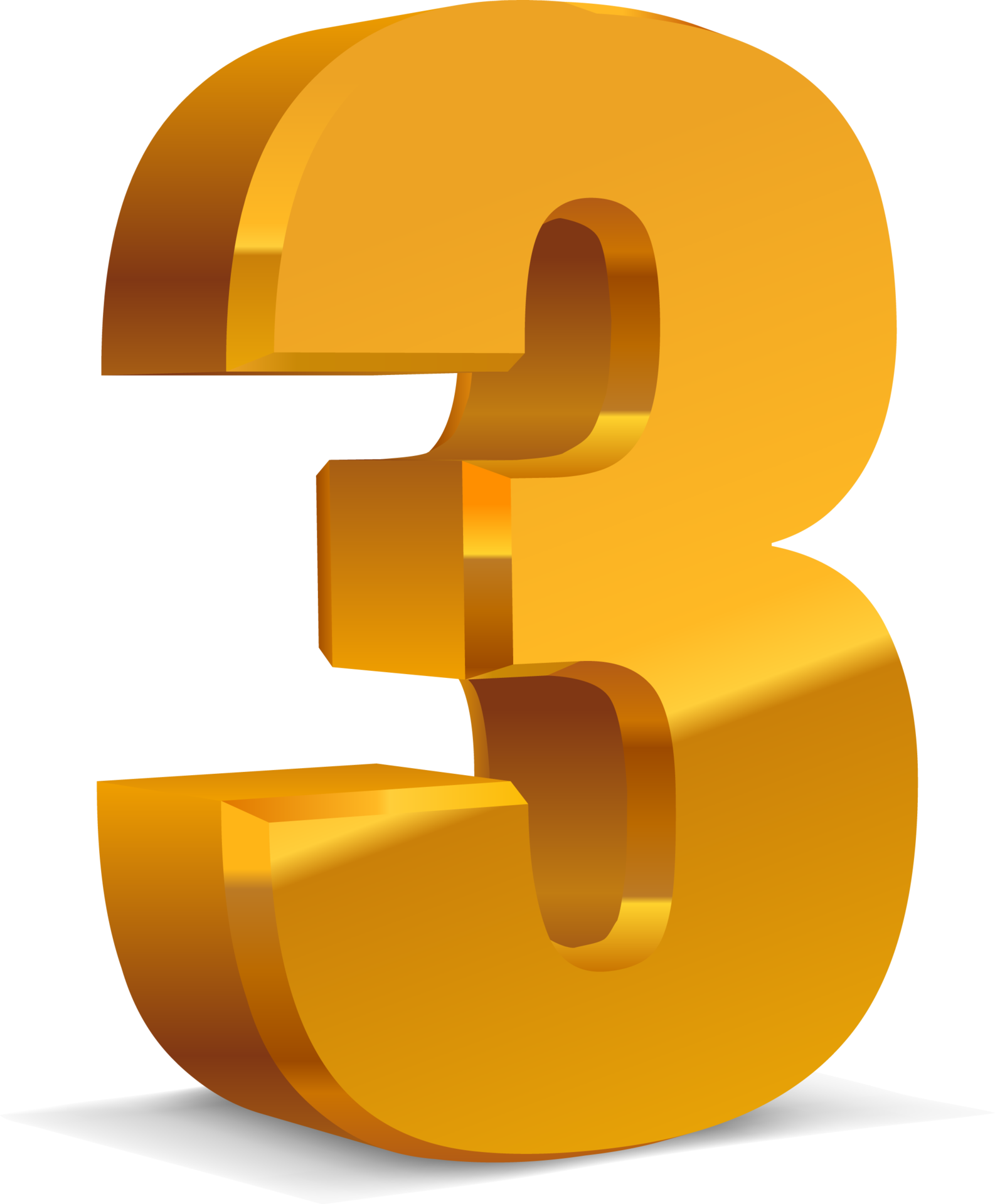Three Weavers - The Number's Quiet Influence
It’s quite something, isn't it, how certain numbers seem to pop up everywhere, shaping our world in ways we might not even notice. You know, like a constant hum in the background, a subtle force guiding things along. We’re talking about the number three, a figure that appears with such a regular rhythm, it's almost as if some unseen hands are working behind the scenes. This particular number, this simple three, holds a surprising amount of weight and presence in our daily lives, from the very basic ways we count to the more complex systems we build. It just seems to be there, really, doing its quiet work.
Think about it for a moment, and you’ll start to spot it. The number three shows up in so many different places, sometimes as a fundamental building block, other times as a key component in a bigger picture. It’s not just about counting one, two, three; it’s about how this specific quantity helps define our surroundings, how it influences the way we communicate, and even how it helps us make sense of time and space. There’s a quiet power to it, a steady hand that guides various aspects of our existence, making connections and creating patterns that are, in some respects, quite fascinating to observe.
So, what if we imagined this pervasive influence as the work of "three weavers"? Not actual people, of course, but rather a way to think about the distinct ways the number three spins its threads through our experiences. Each "weaver" represents a different dimension where this number leaves its mark, pulling together disparate elements to create something cohesive. It’s a bit like looking at the world through a special lens, seeing how this one number contributes to the rich fabric of everything around us, from the very tiny bits of information to the much larger structures we interact with every day.
- Kodak Black Clothing
- 22 Hair Salon %E6%98%8E%E5%88%A9
- Hanover Scoops
- Raspberry Clothing
- Stray Dog Lighting
Table of Contents
- What Makes the Number Three So Special?
- How Do Three Weavers Shape Our Digital World?
- Is There a Deeper Meaning to Three Weavers in Culture?
- What Can We Learn from the Three Weavers' Patterns?
What Makes the Number Three So Special?
You know, when you think about numbers, three has a rather unique spot. It’s not just another count; it’s the natural count that comes right after two and just before four. It’s the smallest odd prime number, which, you might say, gives it a bit of an exclusive feel. It's also the only prime number that shows up just before a square number, which is pretty neat when you consider it. This foundational aspect of three, its very nature as a quantity, makes it a kind of basic building block, a starting point for so many things we understand. It’s an integer, of course, and a cardinal number, meaning it helps us figure out how many of something we have. This fundamental role is, in some respects, the first thread spun by our conceptual "three weavers."
The Core Threads of the Three Weavers
This primary "weaver" seems to focus on the very essence of what three represents. It’s about the simple, direct meaning of the count. For instance, the meaning of three is quite simply a count that is one more than two. It’s that basic. We see its symbol, the glyph that represents the number, everywhere, a familiar shape that instantly communicates its value. Think about a number like 345; it has three digits, and the very first one is a three. This isn't just a coincidence; it’s an illustration of how this number, this fundamental unit, shows up in the structure of other, larger numbers. It’s like the initial stitch in a piece of work, setting the stage for everything else that follows.
Then there’s the way we talk about it. The word "three" and the numeral "3" often appear together in sentences, reinforcing each other, giving us both the spoken and written representation of this quantity. It’s the first Mersenne prime, which is a particular kind of prime number that has some interesting mathematical properties. These are the deep, underlying characteristics that give the number three its stability and its pervasive presence. It’s a pretty solid foundation, you know, something you can really count on. This initial "weaver" establishes the very bedrock upon which all other appearances of three are built, making sure the basic concept is clear and steady.
How Do Three Weavers Shape Our Digital World?
Moving beyond just counting, our conceptual "three weavers" also have a significant hand in shaping the digital spaces we inhabit every day. You might not think of a number as being behind your phone or your online experiences, but three, in various forms, plays a rather important part. Take, for instance, how we connect. You can get phones, tablets, mobile broadband, and SIM-only deals on what’s often described as the UK’s fastest 5G network. That network, you know, is simply called "Three." It’s a direct link, a clear indication of how this number has become a brand, a recognizable entity in the world of immediate communication and connectivity. It’s pretty central to how many people stay in touch and access information.
The Three Weavers' Mark on Technology
Then, consider the visual aspects of our digital lives. Three.js is a JavaScript library that allows developers to make 3D graphics and animations for web applications. This is where our "three weavers" really get to show off their creative side, helping to build immersive and dynamic online experiences. It’s not just flat pictures anymore; it’s about creating depth and movement, making things feel more real on a screen. This involves various technical elements like materials, cubemaps, rendering, and mipmaps, which are all part of bringing those detailed 3D environments to life. It’s a pretty specialized area, but it relies on these fundamental concepts to work.
So, you see, the influence of three isn’t just abstract; it’s actually quite practical in the tools and services we use. From the speed of your internet connection to the way images pop out from your screen, the principles related to this number are constantly at play. It’s like a quiet engine, powering parts of the digital landscape that we often take for granted. This particular "weaver" is focused on building and connecting, making sure that the infrastructure and the visual elements of our online world are robust and engaging. It’s a really important contribution to how we experience the internet and all its possibilities.
Is There a Deeper Meaning to Three Weavers in Culture?
Beyond its basic numerical properties and its role in technology, the number three also holds a rather significant place in human culture and the way we organize our lives. It’s an important number for many different groups of people, showing up in stories, traditions, and even how we structure our understanding of time. This cultural presence suggests a deeper, more symbolic role for our conceptual "three weavers," as if they are shaping not just what we see, but how we think and feel about the world around us. It’s a pretty fascinating aspect, really, how a simple number can carry so much weight in our shared human experience.
The Cultural Strands of the Three Weavers
Consider how we talk about periods of time. We have terms for things that happen every year, but what about every two years, or three years, or four? For three years, the word is "triennial," which just shows how we’ve created specific language around this particular duration. It’s also interesting to note how phrases like "three score years and ten" are used, which is a more traditional way of saying seventy years. This shows how three is embedded in our historical ways of speaking about age and time. It’s a bit like a linguistic pattern, you know, something that has been passed down.
In education, too, the number three pops up. When teaching a new language, for instance, a page of vocabulary and phrases might list English terms like "three by" and "five by." This isn't just about the count itself, but how it’s used in specific expressions that help people learn. And in current events, we hear things like "three times as many cases of measles were reported in the United States in 2014." This highlights how three is used to describe proportions and comparisons, giving us a clearer picture of situations. It’s a really useful way to quantify and understand information.
Even in more abstract situations, like looking for a proper single word to describe one third of a calendar year, we might think of "trimester," which seems to refer to a period of three months. This shows how we break down larger units into parts of three. Or, when looking at discoveries, like four pits being unearthed, and three of which contained gold, it’s the number three that helps us quantify the valuable finds. This "weaver" seems to be constantly at work, giving structure to our narratives, our measurements, and our collective memory, making sure that these cultural threads are clearly defined.
What Can We Learn from the Three Weavers' Patterns?
So, if we consider these conceptual "three weavers" as constantly at work, what kinds of insights can we gather from the patterns they create? It’s not just about noticing the number three, but about appreciating its consistent presence and the varied roles it plays. From the simplest numerical facts to the complexities of digital creation and the nuances of cultural expression, three seems to be a quiet, yet powerful, participant. It suggests that there’s an underlying order, a kind of subtle design that shapes many aspects of our shared reality. It’s a bit like finding a recurring motif in a piece of art, you know, something that ties everything together.
Observing the Three Weavers' Design
The influence of these "three weavers" is, in some respects, quite pervasive. It’s the number that helps us define what comes after two and before four, a basic building block. It’s the brand that connects us to the fastest mobile networks, enabling our digital interactions. And it’s the count that appears in our language, our cultural expressions, and even how we measure time and events. Think about how many things you might have missed, like details about "scattered spider" that involved three key points. It’s almost as if the number three helps us categorize and understand information, breaking it down into manageable parts.
This consistent appearance, from the very fundamental to the quite specific, shows that the number three is more than just a count; it’s a principle of organization, a common thread running through many different areas of human experience. It helps us to make sense of quantities, to build sophisticated digital worlds, and to communicate and understand our cultural heritage. It’s a pretty interesting way to look at something so seemingly simple, finding depth and connection where you might least expect it. The "three weavers" are, in a way, always at work, quietly shaping the fabric of our existence.
This exploration has taken us through the number three's role as a basic numerical concept, its presence in our digital lives through networks and graphics, and its enduring importance in cultural expressions and measurements of time. We’ve seen how this seemingly simple number acts as a foundational element, a technological enabler, and a cultural touchstone, quietly influencing many parts of our daily world.

Red 3d number three isolated on transparent background. Decorative

number three clipart 10 free Cliparts | Download images on Clipground 2024

3d golden number 3 13166893 PNG